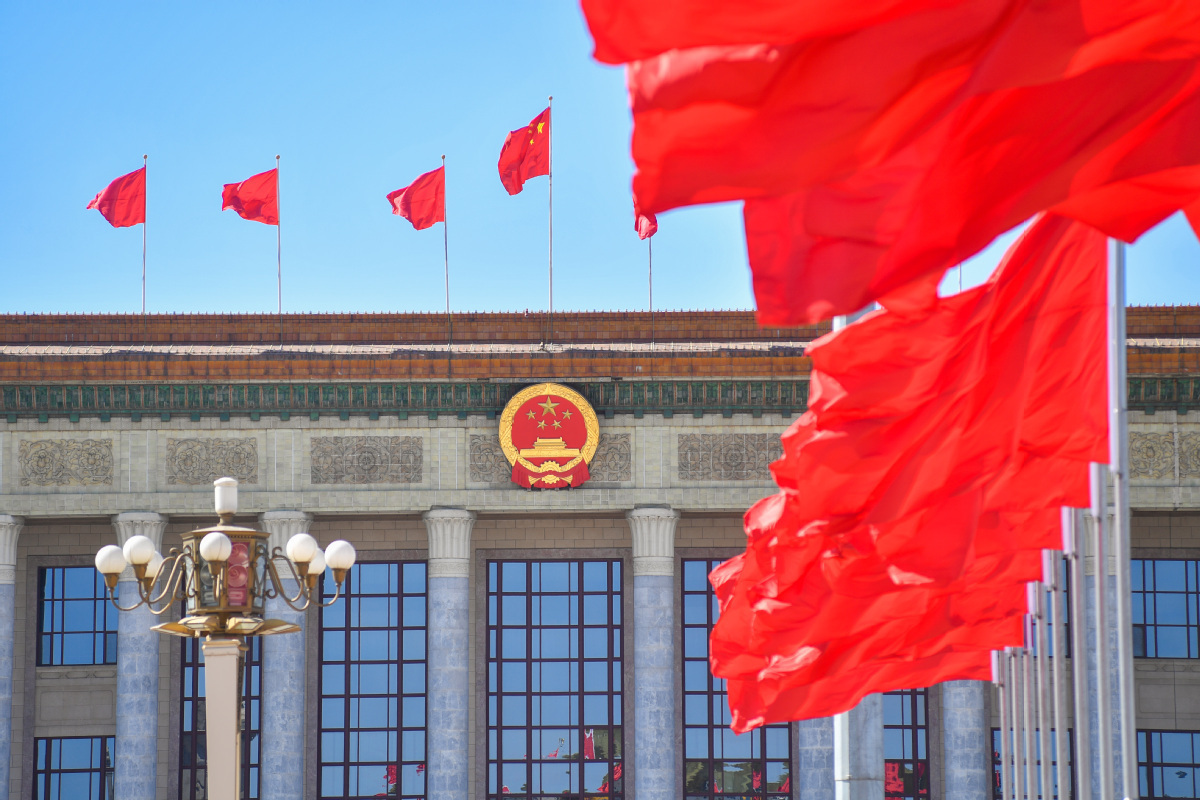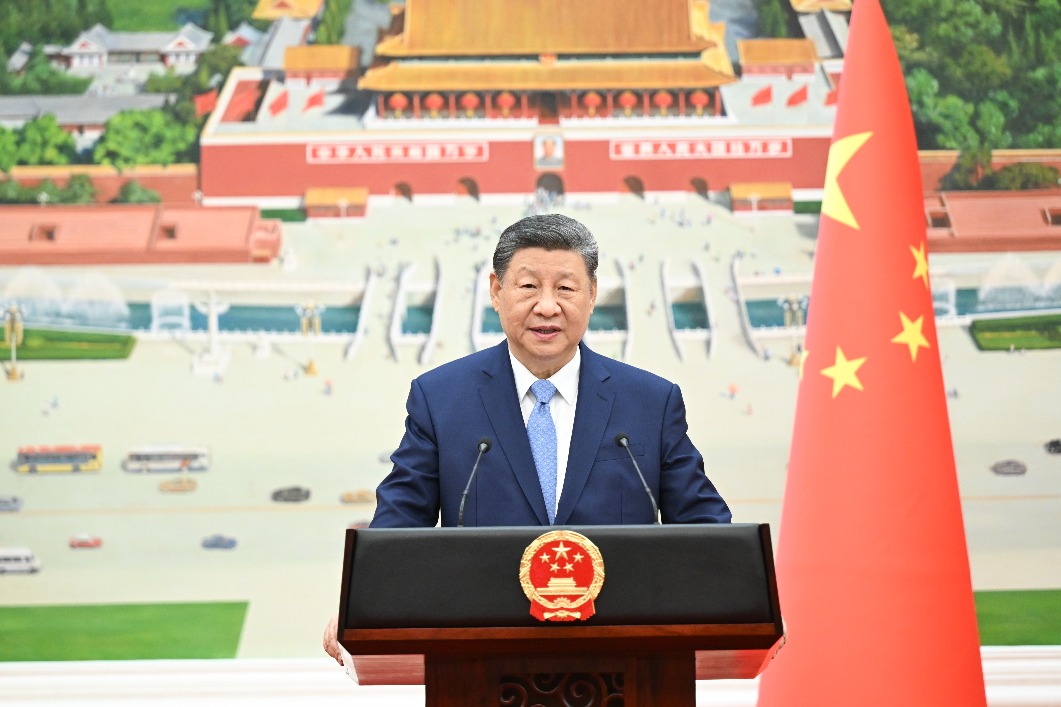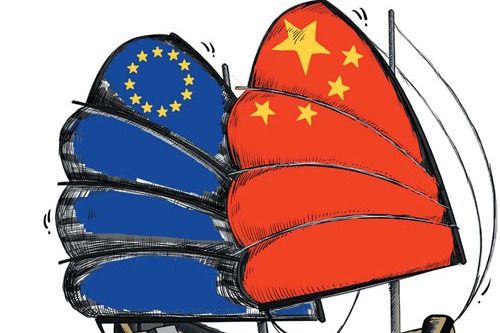Meeting the challenges of the economy


China has mapped out the priorities for its economic policy in 2022, highlighting stability as a major priority at the recently concluded annual Central Economic Work Conference.
Stable employment plays an important role in the economy. But the pressure the Chinese economy faces on both the demand and supply fronts has intensified the cyclical, frictional and structural unemployment risks. However, the COVID-19 pandemic, despite hitting the economy hard, has created more opportunities for new technology and the platform economy, and accelerated the economy's structural transformation.
Major hurdle to job creation
While the structural contradictions have become a major hurdle to job creation, the rapid demographic changes have led to a decline in the working-age population. Yet aggregate employment is no longer a major contradiction. Official data show that about 12.07 million new urban jobs were created from January to November in 2021, which means China had achieved annual target by the end of November. For the record, the country's urban unemployment rate was about 5 percent from January to October.
Although the pandemic has not led to widespread unemployment, it has sharpened the partial and structural contradictions of employment in China. The export-oriented manufacturing industry and the consumer service sector have been dealt a big blow, and fresh college graduates are finding it difficult to get a job.
The employment of young people has long been a worldwide problem; it has become more challenging and complicated since the outbreak of the pandemic.
Imbalance between demand and supply
With regard to frictional unemployment, a large number of graduates enter the job market every year, furthering the imbalance between demand and supply. As for structural unemployment, the education quality in universities, to a large extent, cannot always meet the demand of a rapidly developing economy due to the lack of adequate education reform. To make things worse, the demand for labor has been unstable thanks to the pandemic, which has complicated the international economic landscape and slowed the pace of economic recovery.
The unemployment rate among the 16-24 age group in China, that is, school and college graduates, hit 16.2 percent in July, but dropped to 14.2 percent in October. Yet the improved situation only indicates a decline in frictional and cyclical unemployment; the structural unemployment remains a major problem. No wonder the Central Economic Work Conference underlined the importance of youth employment.
The platform economy, which creates a large number of jobs in China, poses a new challenge to the economy and higher-quality employment. The rapid increase in the employment rate in the platform economy amid the pandemic has further facilitated the transformation of employment structure.
For example, many workers have shifted from the manufacturing to food delivery services sector, which is just one example of how the platform economy has been playing a key role in the structural transition of the economy, including employment. But while the platform economy has increased flexibility, it has also increased the structural imbalance in the labor market.
In contrast, the real economy, especially the manufacturing industry, is facing a "brain drain". And most of the people employed in the platform economy lack proper protection, which is problematic because human capital depreciates quickly.
The problem is especially complicated because many young migrant workers prefer to work in the service sector, rather than the manufacturing industry. According to National Bureau of Statistics data, from 2015 to 2020, the number of migrant workers in the manufacturing sector dropped from 31.1 percent to 27.3 percent, while in the service sector it increased from 44.5 percent to 51.5 percent.
The National Bureau of Statistics data also show that the monthly income of migrant workers in the manufacturing sector was 4,096 yuan ($633) in 2020, compared with about 3,000 yuan in the service sector. This means many people prefer working in the service sector despite the salary being lower than in the manufacturing industry.
Although they are free to choose their jobs, the transition from the manufacturing to the service sector means greater job insecurity and lower income. As such, the traditional social security system based on employment relationship is facing challenges from the platform economy, as some platform companies sign service contracts rather than labor contracts with their employees, leaving a large number of workers uncovered by the country's social insurance system.
Jobs in platform economy a double-edge sword
The employment growth in the platform economy is a double-edged sword for the development of the labor market. On the one hand, it can increase the flexibility of the labor market, make the allocation of resources more efficient, ease the impact of external factors and provide more job opportunities for low-skilled workers. On the other hand, it can increase instability in the labor market.
The current labor market system cannot adapt to new challenges in a short time. And the lack of worker protection will affect the healthy development of the labor market. That's why the Central Economic Work Conference emphasized the importance of upgrading the labor and social security policies for the workers employed on flexible wages.
Employment is the source of people's income and the foundation of social stability. Since it is necessary to accord high priority to employment and pursue a proactive employment policy, the authorities should take advantage of the flexibility of the labor market to tackle structural employment, in order to promote higher-quality employment.
They should also adjust employment policies to strike a balance between the flexibility and security of the labor market, as well as establish a "flexible security" employment system, and address the cyclical and structural contradictions, encourage innovation and entrepreneurship, support flexible employment and launch additional tax and fee cuts for market players. They need to create more jobs and provide job training, too, to improve people's ability to adapt to the economic transformation, so as to prevent a drastic rise in unemployment and improve employment quality.
Addressing the structural unemployment problem should be a long-term task for the central government. And the best way to do that is to ensure people are skilled enough to adapt to the economic transformation.
China is likely to see 10.76 million new college graduates entering the job market next year, 1.67 million more than in 2021, and the government has no choice but to make more efforts to help them find suitable jobs.
For that, the authorities need to expedite higher education reform, in order to improve education quality so students can adapt to the changes brought about by socioeconomic development. And with an eye to the future, they should optimize employment services and training systems and monitor graduates' employment situation.
Balancing supervision and recruitment
The authorities should also work with market players to establish a healthy system, which can help graduates find suitable jobs, and balance supervision and recruitment in the industries that attract a lot of graduates. As for employment in the platform economy, the authorities should take advantage of the sector's flexibility and attach greater importance to job security. There is also a need to improve the lifelong-education system and train workers to adapt to new technologies.
In this context, the authorities should strengthen market supervision to protect employees' rights, and establish a social security system that can keep pace with the growth of the platform economy. It is also important to establish a warning system, which can warn of bankruptcy risks and prevent workers employed on flexible wages from losing their livelihoods.
The views don't necessarily reflect those of China Daily.
The author is an associate professor of the Institute of Population and Labor Economics at the Chinese Academy of Social Sciences.
If you have a specific expertise, or would like to share your thought about our stories, then send us your writings at opinion@chinadaily.com.cn, and comment@chinadaily.com.cn.
































